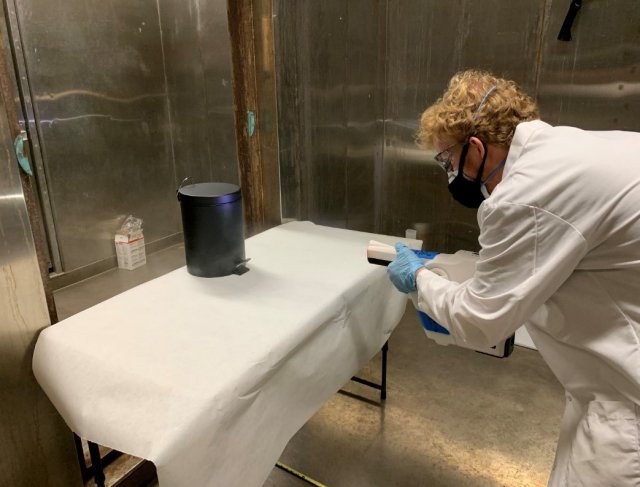EPA Researchers Evaluate Electrostatic Sprayers for Disinfectant Application
Published July 13, 2021

While the latest research shows that COVID-19 is primarily caused by airborne transmission of the SARS-CoV-2 virus, there is still some risk that people may be exposed to the virus from contact with contaminated surfaces. Therefore, CDC still recommends routine cleaning and disinfection of potentially contaminated surfaces. Businesses and institutions, including some airlines, schools, and transit agencies, have been using electrostatic sprayers to clean and disinfect large surface areas quickly and effectively that are frequently touched by many people. EPA researchers, at the request of stakeholders, were asked to evaluate how these sprayers worked.
Electrostatic sprayers have been used for many years in other industries, for example, applying pesticides to crops. Electrostatic sprayers are easily available and can be purchased online or at big box stores which has helped them grow in popularity. Manufacturers have touted them as a technique to apply disinfectants efficiently and rapidly to surfaces, especially those that may be contaminated with the SARS-CoV-2 virus.
The sprayers add an electrostatic charge to the disinfectant spray droplets, usually as as the droplets exit the nozzle of the sprayer, to potentially improve deposition of the droplets onto surfaces, and efficiently using the disinfectant in the process.
EPA researchers found that this attribute may be both an advantage and disadvantage: an electrostatic sprayer may use less disinfectant to cover a surface area, but with less disinfectant applied, the disinfection process may not actually work if the surface does not stay wet for the required contact time. Contact time is a key parameter in the effectiveness of a disinfectant.
While manufacturers also tout the wrap around effects of electrostatic sprayers to better cover many large, complex surfaces, EPA researchers found that regardless of the charge there was limited ability for any of the sprayers to show wrap around effects.
In most cases, cleaning with soap or detergent is enough to reduce SARS-CoV-2 on surfaces. If you choose to disinfect a surface after cleaning, carefully select the appropriate disinfectant and application method and follow the label directions for use and contact time. This will ensure that you can clean and disinfect safely and effectively.
Learn more about EPA’s research on electrostatic sprayers.
Learn more about EPA’s Cleaning and Disinfecting Best Practices During the Covid-19 Pandemic.
Read CDC’s Safety Precautions When Using Electrostatic Sprayers, Foggers, Misters, or Vaporizers for Surface Disinfection During the Covid-19 Pandemic.
